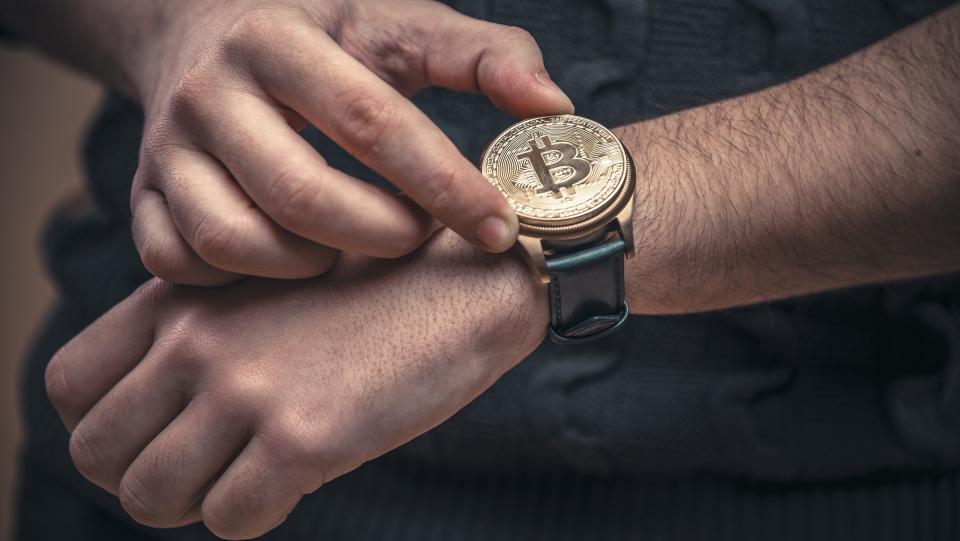How To Use Crypto for ‘Buy Now, Pay Later’ Transactions — Is It Worth the Risk?

Buy Now, Pay Later (BNPL) has been on the rise since the beginning of the pandemic, with its use peaking in December as 23% of all U.S. adults said they used the service, according to Morning Consult. At the same time, the rise of adoption and use of crypto — despite recent extreme volatility — has ballooned, as well. So, it’s no wonder that these two trends converged.
Cash App Borrow: How To Borrow Money on Cash App
Explore: 13 Best Items To Buy in Bulk at Sam’s Club This Summer
BNPL is a type of deferred payment option that generally allows the consumer to split a purchase into smaller installments — typically four or less — often with a down payment of 25% due at checkout, according to the Consumer Financial Protection Bureau (CFPB.)
Now, some platforms are combining this option with cryptos. XRPayNet, for example, a cryptocurrency built on the XRP Ledger, is about to roll out an app that will bring BNPL to the crypto industry and aims to “be the Klarna and Afterpay of the crypto world,” founder Kristian Poliszczuk told GOBankingRates. The app, which features an exchange and wallet, is set to launch June 1st and will be followed by the crypto to fiat card in August, and then the BNPL platform in October, according to Poliszczuk.
“The ‘Buy Now Pay Later’ model will allow customers with a certain amount of collateral locked up with us (known as ‘staked’ in the crypto world) to be given a credit limit of 10-15% of the collateral that they have lodged with us,” he continued. “For example, if a customer agrees to lodge their crypto with us for a fixed period of time to the tune of $20000, we will allow them to buy goods and services to the value of up to $3000 which they will pay back in equal installments monthly.”
More: 6 Alternative Investments To Consider for Diversification in 2022
Poliszczuk added that this gives customers the flexibility to earn an interest on their savings paid in XRPayNet coins on the collateral that they “stake,” but also be able to spend at the same time. “In the beginning, we will allow BNPL for BTC, ETH, XRP and XRPAYNET staked coins.”
In November, e-commerce marketplace Uquid partnered with Binance Pay, allowing users of both platforms to make purchases with crypto, according to a press release. At the same time, Uquid also introduced “PayIn3,” which enabled users to split payments flexibly into three installments within three months (90-days). The platform currently only accepts Bitcoin and Uquid Coin (UQC) as collateral and will continue to expand other coins in the future, according to its website.
Some industry experts view the combination of cryptos and BNPL as being potentially risky, however.
Santiago Portela, CEO of blockchain-based gaming community Fitchin, told GOBankingRates that BNPL “works great if you are paying in stablecoins or dollars, but it gets dangerous if you are directly exchanging your BTC or ETH for a product.”
“With the volatility in the crypto market, you might end up paying far more for a product than you intended. If you buy a product for $8,000, it could be worth 3 ETH at purchase time, but with a monthly $2,000 payment, you might end up paying 4 or 5 ETH if the price of ETH drops over the payment period,” he said, adding that the opposite is also true and you could make a profit if the value of your ETH increases, so there is a risk-reward to it.
See: GameStop Has a Crypto Wallet — Here’s How To Set It Up
Find: Which Generation Has Had the Most Success in Crypto?
“So there could be an arbitrage opportunity in this kind of payment — depending on the price fluctuations of the crypto assets you are buying — but this is a risky game and could result in a lot of pain. All in all, I would recommend sticking to dollar-pegged stablecoins if you are choosing to use crypto for buy now, pay later purchases; otherwise you are taking unnecessary risk. If you think you have enough crypto to purchase a product but then the crypto loses value, you might be forced to default on the payments,” Portela concluded.
This article originally appeared on GOBankingRates.com: How To Use Crypto for ‘Buy Now, Pay Later’ Transactions — Is It Worth the Risk?
